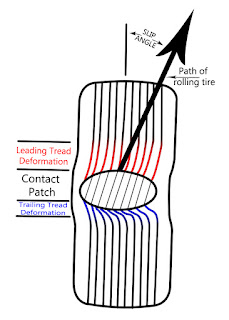Starter (engine)
What is starter?
The starter for the engine is definitely one of the key components of a car. Without a starter a car could never start working: wikipedia: Starter_(engine)So we all understand the 4-stroke combustion engine mechanism, but have you ever asked yourself what triggers the working cycles of an engine? Or where is that energy from? (Of course from the battery.. but how?)
In the old times, in order for the engine to start its strokes, we need manual human power to get the flywheel rotate. This could be harm to the car, dangerous to the person and in modern days with the advent of electric starters, we kick it off. Nice and easy.
What is it composed of?
This is what a start looks at in general: |
| Starter |
- The motor literally means the spinning object. This is where electric energy transfers into kinetic energy.
- The solenoid is a wound coil helix. It is often seen in a relay. Current flows through the coils and generates a magnetic field.
Terms
- Armature: supports the drive shaft and bearings.
- Commutator: conductor.
- Plunger: connecting object for controlling the movements of the lever.
- Lever: connecting rod used to push the pinion forward.
- Pinion (Bendix): sort of freewheel, a combination of gears and springs.
- Field coils and housing: coils for the electromagnetic field.
Ignition (Starting) process
In order to make it short and concise, the whole ignition process could be summarized like this:
- Turn on the ignition switch. This would make the starter relay work. Current is generated in the starter control circuit. This circuit lies in the starter solenoid, not the motor.
- Once the solenoid is activated, the magnetic force would pull/push (depends on the design) the switch. The plunger is engaged and it pushes the lever to move. This would have two effects on the starter: a) the pinion on the drive shaft connected is pushed out and meshed with the starter ring gear on the flywheel of the engine; b) the pushing of the lever closes the high current contact or brushes so that the motor is triggered to rotate. (There is a special gear design along with the pinion. When the pinion is pushed out it would rotate a bit, which minimizes the wear on the shaft, flywheel, etc. This also synchronizes with the rotation of the armature in the motor.)
- The flywheel is engaged with the pinion. Now starter's job is done. It happens all in a second and the flywheel driven by the combustion engine could be rotating way faster than the pinion on the starter. As you may have already realized, it would do harm to the motor components because the motor is impeding the flywheel movements at that time. Therefore, the pinion is designed as a freewheel. (See below additional notes for details.) This helps prevent that from happening.
- When the key is switched back from the Start position, the lever is stuck back to its original position and the pinion comes back, disengages.
Additional points:
Here are some additional points I want to include here.
Freewheel is of great importance for the harmony between the flywheel and the drive pinion of the motor. It is of some similar structure like the one shown below:
 |
| Freewheel |
Freewheel is most commonly used on bikes. Riding on a normal bike, you would notice that when you stop pedaling, the bike wouldn't stop going forward and the wheels just keep rolling. Why? That's credit to the freewheels. The teeth are for the engagements with the chain, the ratchet and pawls are in such special shapes that the wheel could rotate freely in one direction but not the other direction. More precisely, it is engaged clockwise for the case illustrated in the pic and disengaged counter-clockwise. Hence, when your pedals slows down it wouldn't struggle to make it decelerate. Instead it's free riding forward.
The same applies to the pinion on the motors. When the flywheels are in high RPMs, the pinion is rotating on its own. No worries, and no conflicts now.
Neutral safety switch
In automatic transmission, you must be in P or N to start the engine. In manual transmission you should press the clutch to the ground before you manage to switch it on. These are because there is a neutral safety switch in the circuit. You could see it in the 'Electric starting process' image above. When you are in P, N or clutch down, the switch will close and the circuit has its negative end, which is ground. Otherwise, the circuit is incomplete and it would trigger the chemistry in the starter solenoid.
Keep the ignition key on 'START' when the engine is already on
This would be extremely harmful to your starter motor as well as the flywheel. It could shorten the life of the parts although you wouldn't destroy your engine in no time. Please don't do it.



Comments
Post a Comment